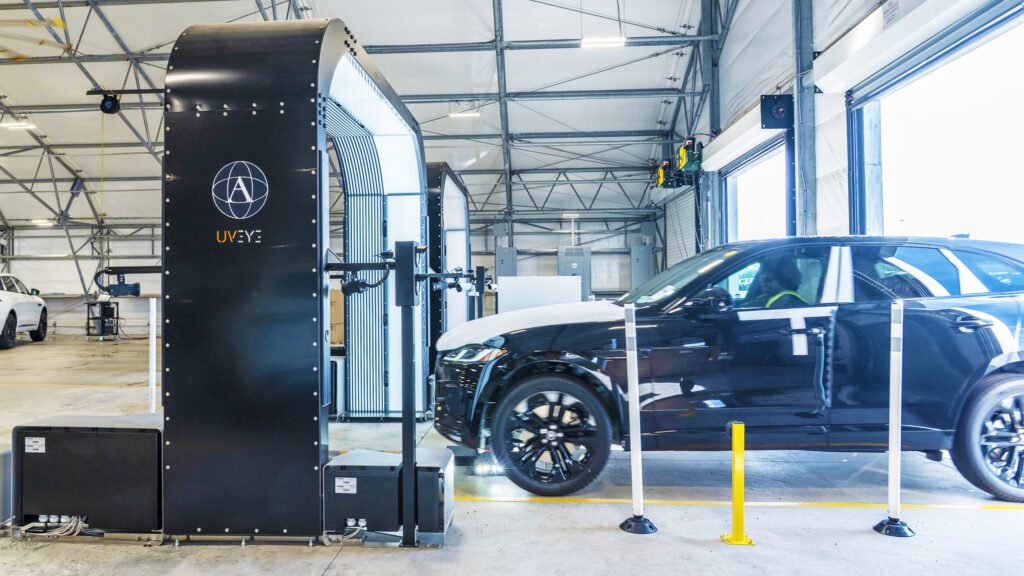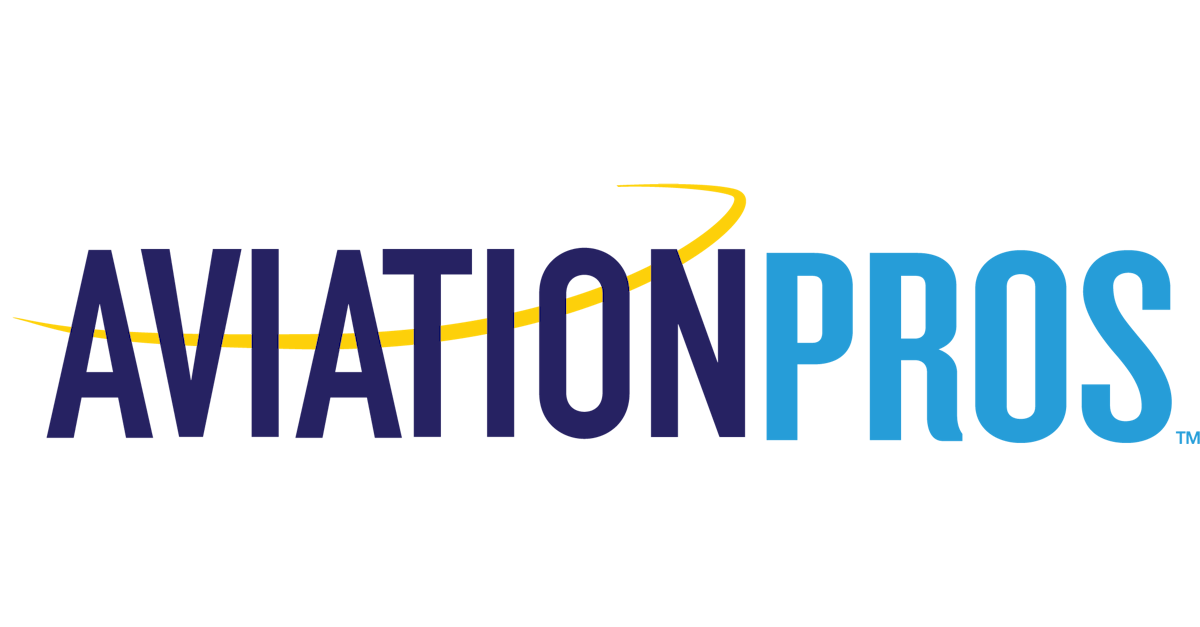Tools & Platforms
JLR Is Now Using The AI Damage Scanners That Hertz Customers Hate
Before new cars reach dealerships, AI scanners uncover flaws most people would never notice, changing vehicle inspections forever
11 hours ago

- Jaguar Land Rover is deploying AI-powered scanners at three major US vehicle ports.
- UVeye’s system detects dents, scratches, and damage as small as 20 millimeters.
- Other major companies, including Amazon and GM, are already using this technology.
Vehicle scanners powered by artificial intelligence have made renting cars through providers like Hertz a major headache for many consumers in the US, but for buyers of new Jaguar Land Rover models, the same technology could prove to be a welcome safeguard.
Read: Hertz’s AI Found A Dent You Can’t Even See And Charged Hundreds To Fix It
Through a new partnership with UVeye, the same company behind Hertz’s scanning machines, incoming Jaguar Land Rover vehicles at major US seaports will be checked for imperfections and damage before they make their way to dealerships.
Jaguar Land Rover is the first brand to employ this technology at scale in the US. It is installing automated inspection stations at its ports in Brunswick, Georgia, Baltimore, Maryland, and Port Hueneme, California.
Faster and more reliable checks
Vehicles are driven through the stations at slow speeds, and within a matter of seconds, the system can identify damage as small as 20 mm (0.7 inches), including tiny dents, scratches, and other damage that could have occurred during production or during the shipment process.
Any issues that are detected by the system are instantly sent to tablets that operators use. The result is said to be faster vehicle flow and fewer manual errors that could occur when employees personally inspect each vehicle.

“Together, UVeye and JLR are setting a new standard for vehicle logistics, utilizing AI to enhance quality assurance from the moment a vehicle enters the country,” UVeye chief executive and co-founder Amir Hever said.
“By deploying our technology at port, JLR is creating a new benchmark of transparency, traceability, and trust throughout the supply chain. This is about more than efficient port processing; it’s about building smarter, faster, and more consistent automotive logistics that benefit everyone from OEMs and dealerships to drivers.”
More: Lawmakers Demand Answers From Hertz On AI Rental Damages System
UVeye’s vehicle inspection stations come equipped with a suite of underbody scanners, tire analyzers, and 360-degree exterior detection systems.
The technology itself is far from limited to JLR. UVeye’s inspection stations include underbody scanners, tire analyzers, and 360-degree exterior detection systems. They are also being used by brands including Amazon and General Motors, in addition to several rental car companies, making it clear that, for better or worse, AI-driven vehicle inspections are quickly spreading across the industry.
Tools & Platforms
AI-Enabled Technology Automates and Optimizes Airport Parking Systems

Vehicle parking accounts for the top source (24%) of non-aeronautical revenue at airports, ahead of retail concessions, real estate investments, and rental car fees, according to the Airports Council International.
At the same time, aging parking access and revenue control equipment like ticket machines and pay stations fail regularly after years of operation. This results in operational cost increases, potential revenue leakage from downtime, and negative impacts on customer satisfaction due to traffic build up at entry and exit. For busy airport executives, these issues are easy to overlook and not prioritize because parking revenue is predictable and significant. However, those who do prioritize parking can quickly find a meaningful area of value creation in terms of revenue and customer experience improvement.
Artificial intelligence (AI) can help airport executives realize this untapped value by transforming airport parking into a hands-off operation that is always on, never breaks down, is more accurate and financially accountable, and provides a better parking experience for airport customers.
AI-enabled parking management systems can improve conditions for operational and landside managers by eliminating the need to:
● Schedule and pay staff to operate payment booths.
● Schedule and pay maintenance and repair staff for traditional fee-collection ticket machines and kiosks.
● Reroute parking traffic when lanes unexpectedly need to close or back up from slow operation.
For airport executives and managers, AI can provide better predictability and control of parking revenue through more accurate vehicle and fee identification. It can also replace electromechanical fee-collection machines and kiosks, which disrupt automatic collections and require significant labor expense when they break down.
In addition, AI has the power to attract more airport parkers by automating every aspect of airport parking — from reserving a spot to paying — consistently and reliably.
How does an AI-enabled parking system work?
An AI-enabled parking system works by creating a digital fingerprint of each vehicle that includes necessary data about the vehicle. Combined hardware and software identify the vehicle instantly via its digital fingerprint as it approaches a parking facility, prompting actions that enable the driver to enter, exit, and pay without stopping. Vehicle identification, fee calculation, and the payment transaction all happen in the background, without intervention from drivers or airport staff.
Dayton International Airport, San Antonio International Airport, Northwest Arkansas National Airport, and Aspen/Pitkin County Airport all recently adopted the Metropolis for Airports AI-enabled modern parking system.
It’s an upgrade that is paying off at Dayton International Airport (DAY): Growing popularity and consistently reliable collections have lifted in-plane revenue per passenger from $10 to $13.14.
“It makes [parking] seamless for our customers,” Gil Turner, Director of DAY, says of Metropolis. “They just drive up. They don’t have to roll the window down. They pull up, the system recognizes the vehicle, takes the license plate information, and they’re able to go right in and park. And when they leave, there’s no interaction with the booth person. So it’s all great. I know that flying can be a frustrating process, so when you have a system, you come home, you can just leave and don’t have to have any stress or worries. I mean, it just helps the customer.”
The Metropolis system runs in the cloud and uses computer vision, license plate recognition (LPR), camera-based hardware, machine learning, and AI to automate parking events, as well as parking data collection. The system requires no upfront capital investment from airports and integrates with existing gate equipment.
A driver registers once and is ready to go. Here’s how it works:
● When a car enters the lot, the computer vision-enhanced camera captures the license plate. Intelligent software then recognizes the car as a Metropolis user and prompts the entry gate.
● When the car leaves, the system again recognizes the license plate, calculates the fee, charges the driver’s selected payment method, and prompts the exit gate to open.
● The system automatically sends a receipt to the driver via email or text.
● Data on the parking event is stored and made available.
In addition to automation benefits, AI-enabled parking systems provide real-time data that is highly valuable for more informed staffing, lane management, and lot maintenance planning. This data can also help airport managers and directors respond to customer input and demand in real time, such as instituting dynamic pricing.
And as an intelligent system, an AI-enabled parking management solution becomes faster and more accurate with each data input as it continues to learn, which provides a consistently superior and more predictable experience for parking users. Combined with reservations and dynamic pricing, AI can increase parking revenue because when parking is easier and priced competitively, drivers are more likely to choose an airport lot or garage over an alternative, such as an off-airport facility or ride-hailing service.
Elevate airport parking with AI
Metropolis operates a network with over 4,500 parking locations in more than 50 countries and 350 cities, including over 80 airports. More than 18 million people are Metropolis members.
Relates DAY’s Manager of Business Development, “Metropolis was part of a competitive bid process, and one of the things that stood out between them and the others who were in the process was the technology but also how they implemented it and their focus on the positive impacts to the customer. Positive customer service leads to additional revenue, happier passengers, and everything that we’re looking for here at Dayton.”
He adds, “On the very first day Metropolis rolled out, I said I’m going to go test this technology. I tested each of the parking lots. Each one of them worked perfectly, and so the fact is that our passengers can now get that same experience without having to roll down their window and wait in line. They just access our parking. Our slogan is easy to and through, and [the Metropolis solution] is really the definition of that slogan.”
When an airport joins the Metropolis network, the company installs its computer vision cameras and maintains them at no cost. Metropolis also helps with systems integration with existing gates. Then, the payment model shifts to a set-up fee and subscription, as is common for cloud-hosted software services. And like other software-based, consumer-facing brands, Metropolis is constantly improving its product with updates that are automatically deployed across the network.
The bottom line is that airport parking facilities that use Metropolis are faster, easier, more convenient, and less congested than those using traditional systems.
Are you ready to elevate your airport’s parking? Talk to Metropolis today.
Tools & Platforms
Most Employees Don’t Know How To Adopt AI—Survey

The majority of employees say they don’t know how to adopt artificial intelligence, according to a new survey by The Harris Poll on behalf of MasterClass.
In the report, 49 percent of respondents said they feel direct pressure to adopt AI, yet 55 percent said they don’t know where to start.
Why It Matters
Artificial intelligence has changed the larger workforce and business landscape in America, with most companies looking to employ it as a way to boost productivity.
But unclear rules and policies around the technology have led to some confusion among workers. A previous study from Howdy.com found that 16 percent of professionals sometimes pretend to use AI.
Cheng Xin/Getty Images
What To Know
In the MasterClass survey of nearly 1,700 U.S. workers, 66 percent said they had to teach themselves AI on the job.
That’s in addition to 54 percent who say their employers aren’t providing adequate AI training.
The percentage was roughly the same among men and women, at 57 and 50 percent, respectively. Meanwhile, 57 percent of Gen Z, 53 percent of millennials and 53 percent of Gen X professionals said they were going without proper AI workplace training.
“In many ways, the rise of AI in recent years is similar to the same integration environment involving social media nearly 20 years ago,” Alex Beene, a financial literacy instructor for the University of Tennessee at Martin, told Newsweek. “Whereas some employers with more tech-savvy employees were able to easily adapt to utilizing a new medium for communication and marketing, others took years to grasp how to use it effectively.”
Reza Hashemi, the CEO and founder of Binj and ZEROin AI, said there’s a perception that AI adoption is synonymous with career security, but many organizations often overestimate how seamlessly the new technology fits into daily workflows.
“Long term, if businesses don’t bridge the gap between hype and practical application, they risk creating a culture of fear and superficial adoption instead of true innovation,” Hashemi previously told Newsweek.
What People Are Saying
HR consultant Bryan Driscoll told Newsweek: “Most employees aren’t struggling with AI itself – they’re struggling with employers who won’t equip them. Workers are told to figure it out without training, support, or guardrails, while leadership races to show they’re innovative. Forcing workers to self-teach under pressure is a short-sighted gamble that reveals a hollow commitment to development.”
Beene told Newsweek: “With AI, we’re seeing businesses accustomed to a decades-long workflow now struggling to see what AI would truly change and benefit in their operations. Much like with social media, these employers will eventually find which methods best suit them, but don’t expect it to be rapid for all.”
What Happens Next
In the next few years, companies that don’t properly address AI could reduce the trust of their employees, Driscoll said.
“Long term, this isn’t just poor management. It’s a recipe for widening inequality and eroding trust in the workplace,” Driscoll said.
Tools & Platforms
AI-enhanced teaching techniques earns Shenango professor a Faculty Engagement Award

SHARON, Pa. — Tammy Divens, teaching professor and program coordinator of Penn State Shenango’s occupational therapy assistant program, recently received a 2025 Faculty Engagement Award from Penn State Teaching and Learning with Technology (TLT).
The mission of TLT is to explore new and emerging technologies and find collaborative ways to innovate and transform teaching pedagogy and learning strategies for faculty and students at Penn State. The theme of the 2025 Faculty Engagement Awards is “Generative Artificial Intelligence (AI) for Teaching including Microsoft Copilot 365.” According to a release, faculty award recipients will collaborate with TLT to experiment with AI-driven tools to support course planning, content design and instructional delivery.
“I’ve been able to explore innovative educational technologies, collaborate with TLT, and engage with colleagues about using AI tools to enhance teaching and creativity,” said Divens, whose primary focus has been integrating generative AI into the classes that she teaches.
“I’ve used ChatGPT and Microsoft Copilot to support course planning, improve presentations, develop new assignments, and align course content with accreditation requirements,” Divens said. “These tools have streamlined my preparation and allowed me to design more engaging and effective learning materials.”
According to Inside Higher Ed’s 2025-26 Student Voice survey, 85% of students who participated claim to have used generative AI for coursework in the last year. As part of the same survey, 43% of students felt somewhat positive or very positive about faculty use of generative AI, as long as it was done thoughtfully and made the instruction more relevant and efficient.
Divens plans to do just that.
“I have leveraged AI image generation through Adobe Express and ChatGPT to create course introduction videos and produce humorous or creative content to increase student engagement,” Divens said. “These efforts have enriched both the instructional design and the overall classroom experience.”
Faculty Engagement Award recipients work with an instructional designer and technology support staff from TLT to help identify the most effective in-class uses of a particular technology. Additionally, a TLT researcher may assess the impact of this technology and share relevant findings of the program with the greater Penn State community.
-

 Business2 weeks ago
Business2 weeks agoThe Guardian view on Trump and the Fed: independence is no substitute for accountability | Editorial
-
Tools & Platforms1 month ago
Building Trust in Military AI Starts with Opening the Black Box – War on the Rocks
-

 Ethics & Policy2 months ago
Ethics & Policy2 months agoSDAIA Supports Saudi Arabia’s Leadership in Shaping Global AI Ethics, Policy, and Research – وكالة الأنباء السعودية
-

 Events & Conferences4 months ago
Events & Conferences4 months agoJourney to 1000 models: Scaling Instagram’s recommendation system
-

 Jobs & Careers2 months ago
Jobs & Careers2 months agoMumbai-based Perplexity Alternative Has 60k+ Users Without Funding
-

 Podcasts & Talks2 months ago
Podcasts & Talks2 months agoHappy 4th of July! 🎆 Made with Veo 3 in Gemini
-

 Education2 months ago
Education2 months agoMacron says UK and France have duty to tackle illegal migration ‘with humanity, solidarity and firmness’ – UK politics live | Politics
-

 Education2 months ago
Education2 months agoVEX Robotics launches AI-powered classroom robotics system
-

 Funding & Business2 months ago
Funding & Business2 months agoKayak and Expedia race to build AI travel agents that turn social posts into itineraries
-

 Podcasts & Talks2 months ago
Podcasts & Talks2 months agoOpenAI 🤝 @teamganassi

